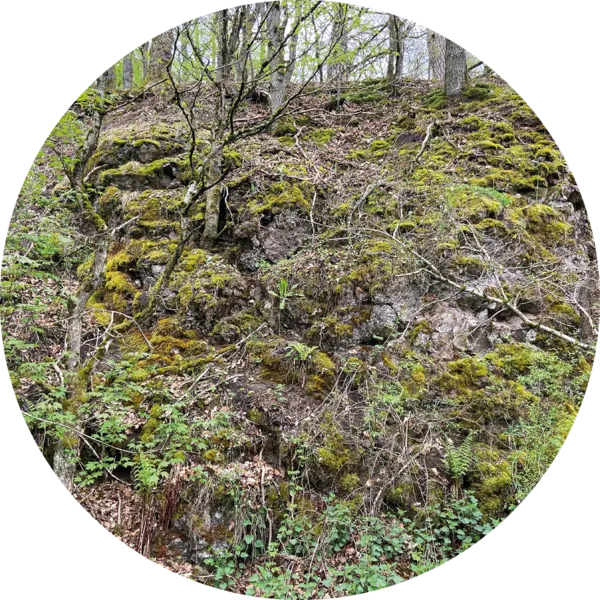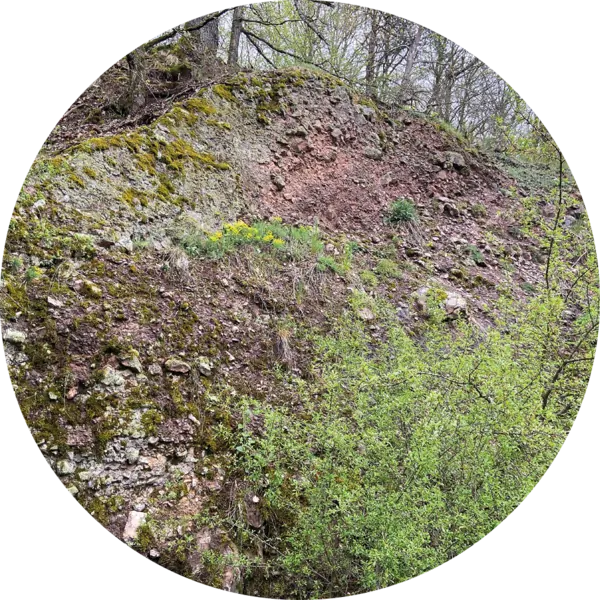On a voyage of discovery into history
An „outcrop“ is an area of the earth‘s surface where rock and bedrock are exposed. Usually, rough structures and layers can be recognised. Natural outcrops are found, for example, at the edges of landslides, on steep banks and coasts, and on rock faces. Artificial outcrops occur, for example, in open-cast mines, quarries, gravel pits, construction pits and road or railway cuts.
Here at this site, the construction of the former Neubrücke-Birkenfeld railway line has made the meeting of two different rock formations visible. We find almost ideal outcrop conditions, because one can recognise both coarse structures of the rock and fine sedimentary structures.

Rock of volcanic origin
On the northern side, to the left , one can see a compact rock of volcanic origin, called andesite.

Sedimentary rock
On the southern side, to the right, a sedimentary rock from river deposits is visible. This consists of a mixture of small and large boulders and pebbles with fine sands and clays.
The rocks were formed about 300 million years ago. In Central Europe, a high mountain range (Variscan Mountains) was formed by the collision of the primeval continents. The high mountain range was worn away by intensive erosion and the rivers transported the alluvial material into the large basin, which stretched from the Saar river to the Rhine river. Due to the high pressure of overlying rock layers, sandstones, claystones and conglomerates were formed here. At the same time, along tectonic faults in the earth‘s mantle, viscous magma rose from the earth‘s interior into these sedimentary layers and cooled. This rock is called andesite.
Geological outcrop
- are refuges for many endangered animal and plant species.
- are usually characterised by a relative lack of nutrients, strong temperature differences and a low water storage capacity.
- provide insights into the physical and historical development of the earth, of the landscape and of life.